| अन्य नामों | छिद्रण ब्लेड, छिद्रक स्कोर कटर |
|---|---|
| उत्पत्ति का स्थान | चीन |
| आवेदन | प्लास्टिक, कागज, बोर्ड, गैर-बुना, फिल्म, पन्नी, लेबल, टेप, कपड़ा, पैकेजिंग, कालीन, बैग, कोर, रबर, रोल |
| सामग्री | 65Mn,9CrSi,Cr12MoV,SKD-11,HSSl |
| मॉडल संख्या | सीवी-पीके |
| ओईएम सेवा | उपलब्ध |
| भुगतान की शर्तें | एल/सी, टी/टी, वेस्टर्न यूनियन |
| पैकेट | कार्टन बॉक्स, लकड़ी के मामलों में |
| डिलीवरी का समय | 7-20 दिन |
साझा:
A perforating blade, also known as a perforation blade, perforated blade or hole saw in some contexts, is a specialized cutting tool designed to create a series of small cuts or holes in a material, leaving behind uncut sections. This allows the material to be easily torn or separated along the perforated line. The term “perforating” itself implies the act of making a line of holes or tears in something so that it can be easily broken off. In industrial applications, perforating blades are crucial for creating controlled weaknesses in materials for various purposes, from packaging to paper products.
Perforating blades find extensive use across a wide range of industries due to their ability to create easy-tear lines. Some common applications include:
The choice of material for a perforating blade depends on the material being cut and the demands of the application. Common materials include:
The selection of the appropriate material ensures the perforating blade maintains its sharpness and provides consistent performance over its lifespan. Coatings like black oxide can also be applied to improve wear resistance and aid in identifying wear.
Perforating blades come in various shapes and configurations to achieve different perforation patterns and cutting actions. Some common shapes include:
The working principle of a perforating blade involves applying pressure to the material at specific points or along a line, creating a cut or a series of cuts. The geometry of the blade, particularly the teeth and the cutting edge, determines the length and spacing of the perforations. For rotary blades, the continuous rotation ensures a consistent perforation along the material’s path. The “cut and tie” ratio is a critical parameter, defining the length of the cut and the remaining uncut material, which dictates the ease of tearing and the strength of the perforated material before separation
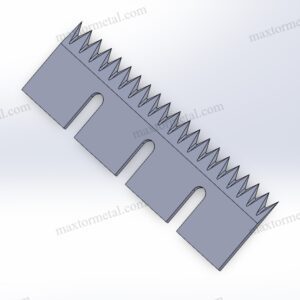

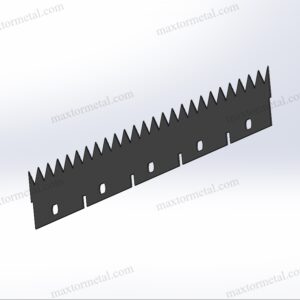
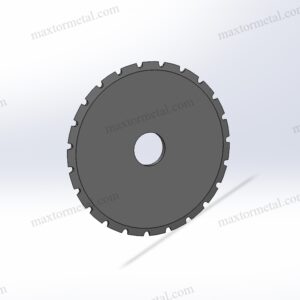
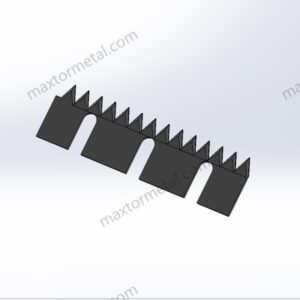
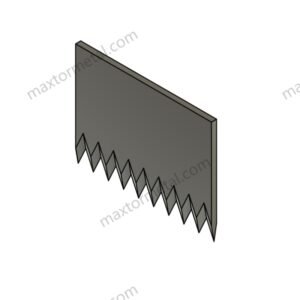
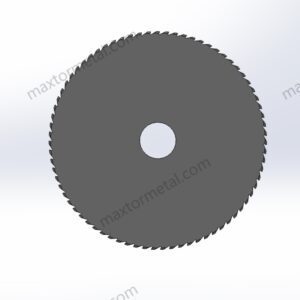

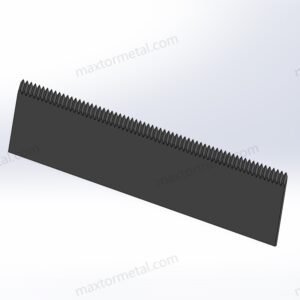
आयात की सुविधा का आनंद लेना आसान है, परिवहन से लेकर सीमा शुल्क निकासी तक, हम पूरी प्रक्रिया को संभालते हैं, आपको बस वैट का भुगतान करना होगा और कंपनी में माल आने का इंतजार करना होगा।
हमने इसके ब्लेडों को अनगिनत अनुप्रयोगों में उपयोग होते देखा है और आप हमारे सामने जो भी प्रोजेक्ट आए, उसे संभालने के लिए यह तैयार है - सटीकता, स्थायित्व और बेजोड़ प्रतिस्पर्धी मूल्य प्रदान करता है।
चाहे आप चित्र, रेखाचित्र या नमूने प्रदान करें, हम आपके लिए चित्र बनाने और निर्माण करने में सक्षम हैं। हमारे पास लगभग किसी भी औद्योगिक टूलींग एप्लिकेशन को बेहतर बनाने के लिए मौजूदा डिज़ाइन और विनिर्देशों को संशोधित करने में सहायता करने की क्षमता भी है। अपनी विशिष्ट आवश्यकताओं पर चर्चा करने के लिए कृपया हमारी समर्पित बिक्री टीम से संपर्क करें।
गुणवत्ता नियंत्रण के लिए परीक्षण और निरीक्षण की एक श्रृंखला की जाती है, जिसमें प्रथम वस्तु निरीक्षण, आने वाली सामग्री का निरीक्षण, और प्रमाणित सामग्री, प्रक्रियागत गुणवत्ता निरीक्षण, अंतिम गुणवत्ता निरीक्षण शामिल हैं।
चाहे आप आयातक, वितरक, थोक विक्रेता या अंतिम उपयोगकर्ता हों, हम न्यूनतम MOQ, पूछताछ के लिए कोई परेशानी नहीं और खरीद के लिए अधिक स्वतंत्रता के साथ आपका स्वागत करते हैं।
अपने अनन्य मॉनिटर बनें, उत्पादन लाइन में हर महत्वपूर्ण नोड का नियमित संचरण, चाहे कितनी भी दूर हो, उत्पाद की प्रगति को यथासंभव समझने के लिए!
नानजिंग Metal औद्योगिक कंपनी लिमिटेड
मिंगजुए औद्योगिक पार्क, लिशुई, नानजिंग, जियांग्सू, चीन